Sustainability
New Zealand Steel has been working on it for years.
Article by Jenny Bain, Rooflink Magazine.
Climate change and rising energy costs have seen sustainability and environmental management gain momentum all around the world. In New Zealand the Government has outlined some initiatives as part of a broader programme to improve energy efficiency and sustainability and the building environment will be a focus for much of this activity, with sustainable building materials being a significant part of that process.
In changes outlined in the review of the New Zealand Building Code, building designers will be required to demonstrate the “intended life” for a building and demonstrate that “sustainable” factors have been given full consideration in material selection.
As one of the country’s major companies, New Zealand Steel began 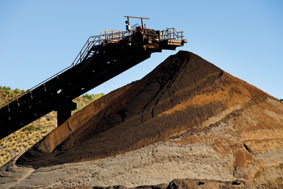 its journey with sustainable business practices 40 years ago, though much of what it has embraced is little known or recognised. New Zealand Steel has long been striving to minimise waste and reduce the environmental impact of its mining and manufacturing operation while still delivering innovative sustainable steel products and co-products. It is actively involved in the sustainable building movement and is a shareholder in BEACON, which is running the NOW homes project, a research programme creating affordable homes that are warmer, healthier, cheaper to run and reducing the impact on the environment.
its journey with sustainable business practices 40 years ago, though much of what it has embraced is little known or recognised. New Zealand Steel has long been striving to minimise waste and reduce the environmental impact of its mining and manufacturing operation while still delivering innovative sustainable steel products and co-products. It is actively involved in the sustainable building movement and is a shareholder in BEACON, which is running the NOW homes project, a research programme creating affordable homes that are warmer, healthier, cheaper to run and reducing the impact on the environment.
New Zealand Steel advocates the use of Life Cycle Assessment (LCA) as a measurement tool for quantifying the impact on the environment of a product or service throughout its lifespan. This is seen as the fairest way of assessing potential environmental impact and extends from the extraction and processing of raw materials through to the manufacturing process, distribution, end-use and then waste management and/or recycling including all the intervening transportation steps.
Of significance is the fact that embodied energy in building materials is significantly less than the energy consumed by the occupants of the building. In the UK a study by the Steel Construction Institute showed that the energy embodied in the structural system is about 2% of the total energy consumption of the building over an expected life of 60 years.
Research by the Steel Construction Institute found that for an air-conditioned office building over a 60 year design life, the ratio of embodied to operational energy is around 1:10.
Unique local resource
New Zealand Steel is unique in the world of steel making. This is because it uses its own iron sands resource as a key ingredient in the production of high quality steel and is the only company in the world making steel in this way.
In recent times technology and product development have been at the heart of changes in the steel industry, with increasing importance placed on product lifecycle and a manufacturing process that delivers sustainable products.
New Zealand Steel is the single largest employment site in the country 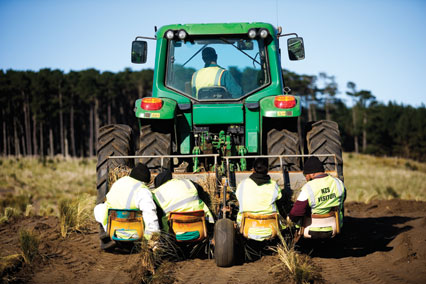 and is the country’s largest steel producer (620,000 tonnes of steel per year). New Zealand Steel contributes 1% of New Zealand’s GDP and over $2 billion into the economy. One half of all steel produced is exported.
and is the country’s largest steel producer (620,000 tonnes of steel per year). New Zealand Steel contributes 1% of New Zealand’s GDP and over $2 billion into the economy. One half of all steel produced is exported.
New Zealand Steel was one of the first companies in New Zealand to set up a laboratory to measure the environmental impact of its manufacturing site with air and water quality being constantly monitored and information presented to the Auckland Regional Council and a local environment committee.
The company’s objectives of managing its environment and minimising harmful affects from its Glenbrook site was recognised by achievement 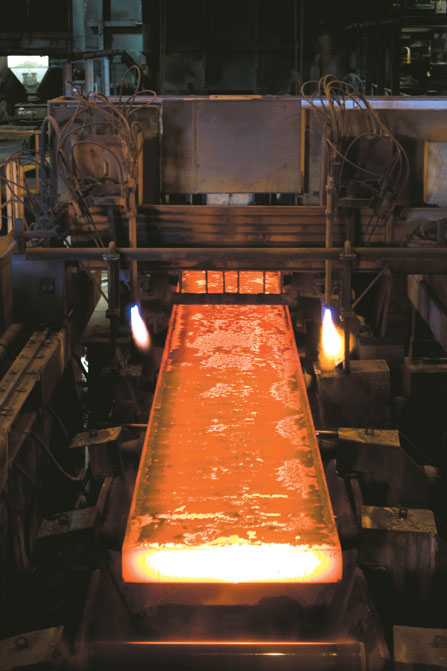 of ISO 140001, one of only a few major New Zealand companies to achieve this internationally recognised standard. The company had already developed its Environmental Management Systems prior to the establishment of the ISO standard in 1997 and by far the biggest percentage of capital investment in environmental control has been in the improvement of the quality of emissions into the atmosphere.
of ISO 140001, one of only a few major New Zealand companies to achieve this internationally recognised standard. The company had already developed its Environmental Management Systems prior to the establishment of the ISO standard in 1997 and by far the biggest percentage of capital investment in environmental control has been in the improvement of the quality of emissions into the atmosphere.
It is the increasing importance of product lifecycle and a manufacturing process supporting sustainable products that is shaping the future for New Zealand Steel and its primary manufacturers. It is no longer merely a steel business but one that is producing a number of innovative co-products from what previously were ‘waste streams’. For example a co-product from the smelting process is used for road surfacing, soil conditioning, sports field drainage and filtering in waste water treatment by both Auckland City and Franklin District Councils.
Extraction of iron sand
The iron sand extraction process at New Zealand Steel’s Waikato North Head mine site and concentration plant is itself an exercise in improved environmental efficiency. When the iron sand is concentrated using double drum magnetic separators and further cleaned before stock piling, the iron sand is transported in the form of slurry through an underground pipeline over a distance of 18k to the Glenbrook mill. No trucks required. Strenuous efforts have been made to reduce the levels of clay in the slurry and as part of a study into utilising this “waste” material the company is awaiting resource consent to develop a worm farm from the clay material carried in the slurry pipe. The sand that is left over from the extraction process - called “tailings” - is returned to the site where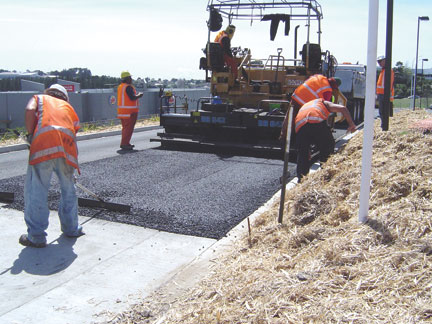 the iron sand was removed and these areas are being progressively planted with Marram grass and pine trees. It is almost impossible in parts of the sand dunes to tell that the area was once mined.
the iron sand was removed and these areas are being progressively planted with Marram grass and pine trees. It is almost impossible in parts of the sand dunes to tell that the area was once mined.
Recycling
The steel industry in New Zealand has a good record of recycling. Scrap steel comes from a variety of sources including the scrap generated in steel plants and the off-cuts generated by manufacturers. There is also steel that has been used to manufacture items that have become obsolete. Steel can be endlessly recycled and does not suffer any product degradation, which makes its life cycle potentially continuous. Steel scrap is a necessary and integral part of the steel manufacturing process and the average recycled content of steel produced by New Zealand Steel is approximately 12%. The recovery rate of steel from buildings is 85% and a recent report on commercial construction waste found that more than 90% of steel was recycled.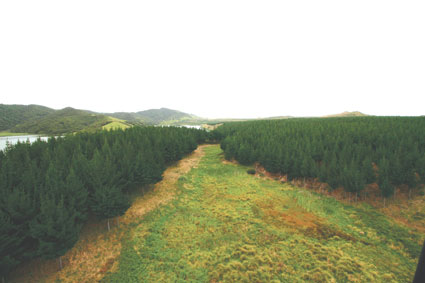
Other waste reduction initiatives include.-
- Nearly 82% of the total waste from New Zealand Steel’s sand to steel process is recycled, reused or resold and the company continues to actively pursue new ways to reduce waste.
- Hot gases are recycled to generate 70% of its electricity needs; the waste stream going into the onsite landfill has been reduced 60% in the past three years owing to targeted recycling and reduction programmes.
- 15 tonnes of plastic and 25 cubic metres of polystyrene have been diverted from landfill in the last year; all old machinery and scrap metal on the site has been recycled through the steel making process and the use of chemicals has been reduced.
- One million tonnes of water is circulated through the steel making and finishing operations daily with 2% of the total added each day to replenish discharge water. Maximum conservation is achieved by water being cleaned, cooled and re-circulated many times. A large volume of storm water is collected on site but New Zealand Steel also takes water from the Waikato River, with an innovative system in place to ensure that fish stocks and recreational users of the river are not affected.
Capital investment
The greatest amount of capital investment at the 190 acre Glenbrook site has been directed into issues concerning the environment, specifically improving the quality of emissions into the atmosphere. New Zealand Steel is a member of the World Steel Association (formerly the International Iron and Steel Institute IISI) which in its first sustainability report for the world steel industry commits to seven key actions including.-
- Expanding the use of efficient technology
- Research into new low carbon steelmaking methods
- Maximising the recycling of steel and by-products
- Developing new generation steels that improve energy efficiency of the products in which they are used.
Steel cannot be produced without the production and emission of carbon dioxide. However NZS has committed to reduce CO2 emissions to the minimum and has consistently met government targets for reducing these emissions. It is currently involved in a joint venture with a Japanese steel company researching new technology for reducing coal use in the steel making process.
A big factor in consideration of steel for sustainable building is the distance required to transport it through the supply chain and the level of recycling that is possible at the end of its life. As our environmental consciousness is being constantly aroused, the 80% of RANZ primary members involved in metal roofing plus associates in the manufacturing and supply sector should note the following advantages of steel for today’s building applications.-
- Steel can be engineered to precise specifications which means minimum waste on site
- It is non-toxic and is available coated to give greater corrosion resistance and durability
- Steel products can be used to reduce the cooling and heating of buildings, leading to reduced energy use
- Steel products are light and easily transported
- Steel products have been in use in New Zealand for over 100 years for the catchment and storage of drinking water
- Steel is the most recycled material in the world and does not suffer any degradation through repeated recycling.
- Steel requires minimum maintenance and has a long life.
- Steel is non-combustible
